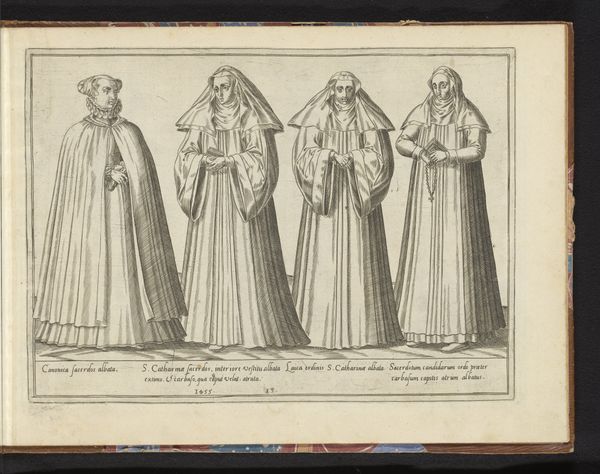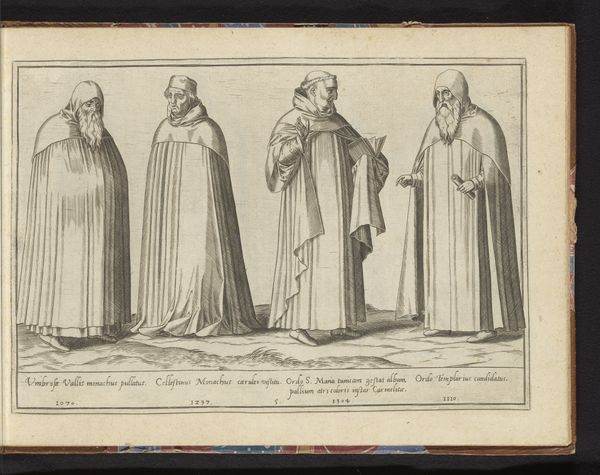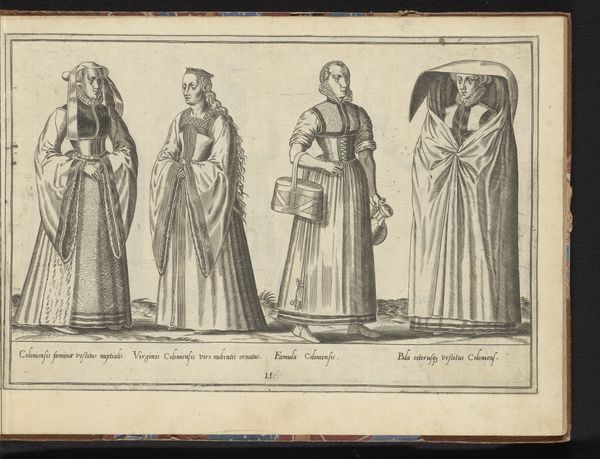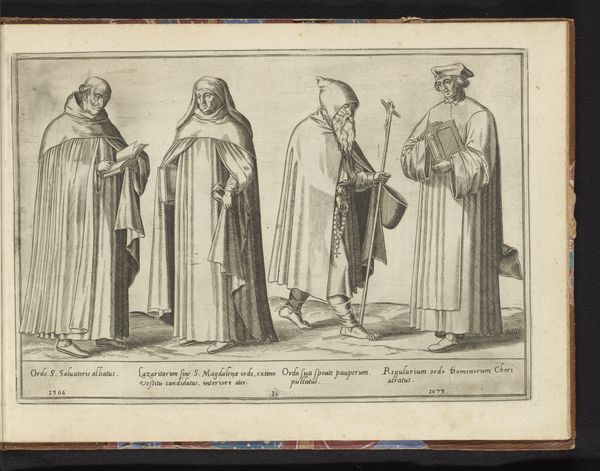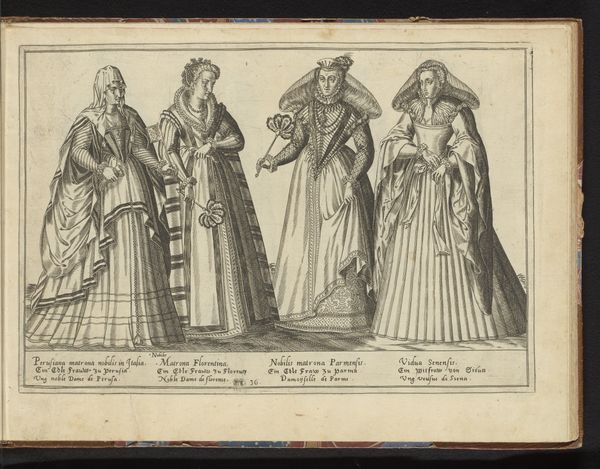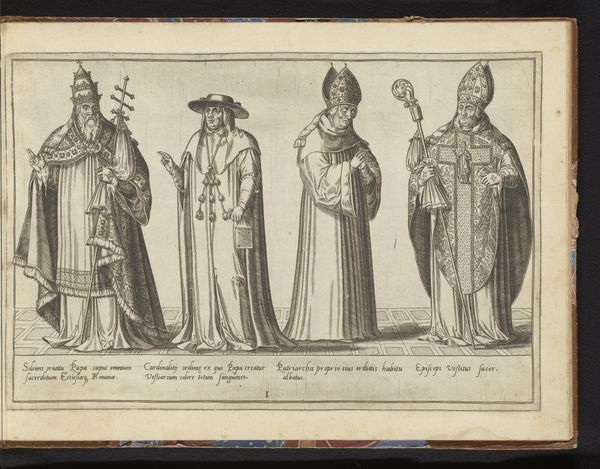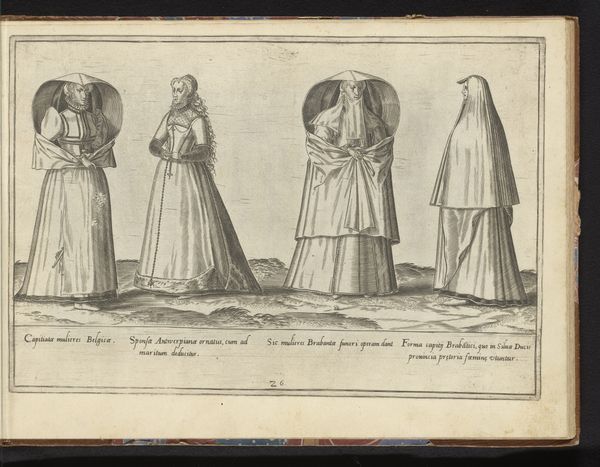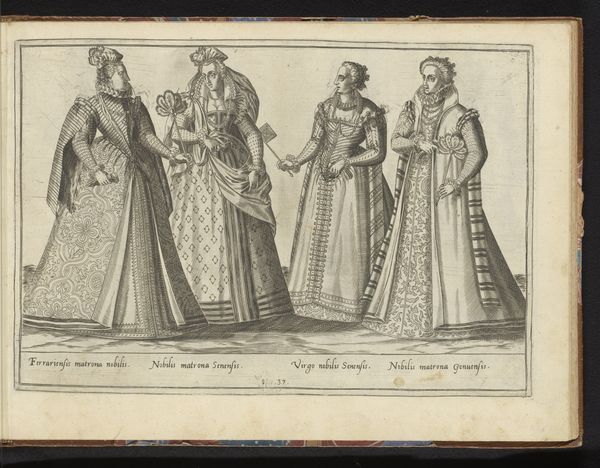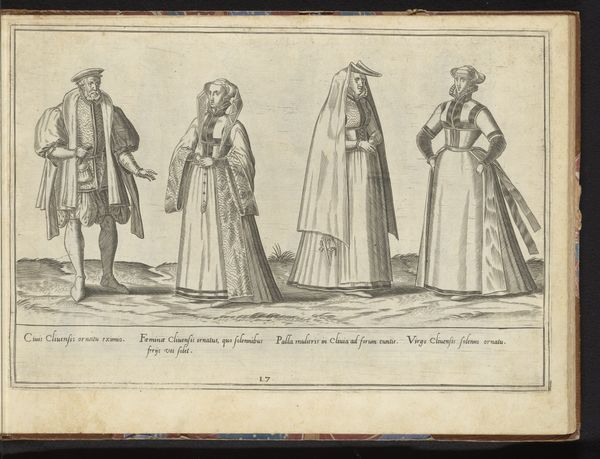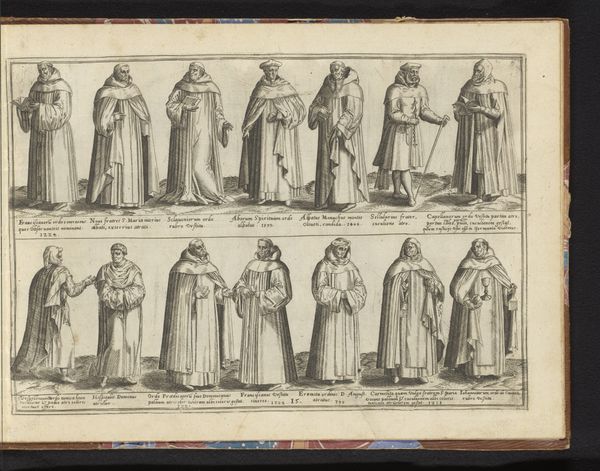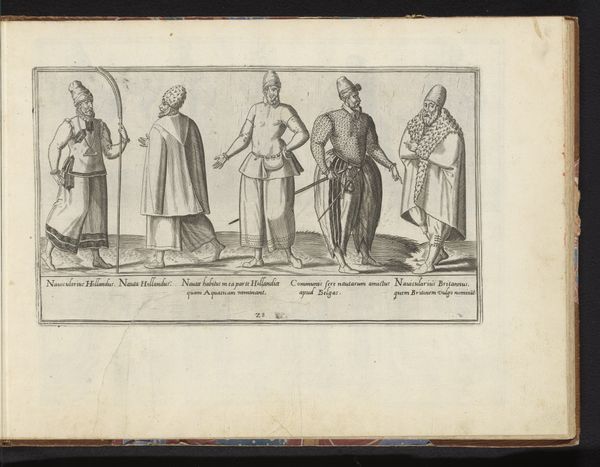
print, engraving
#
medieval
# print
#
figuration
#
coloured pencil
#
line
#
sketchbook drawing
#
history-painting
#
engraving
Dimensions: height 265 mm, width 360 mm
Copyright: Rijks Museum: Open Domain
Curator: Welcome. Let’s discuss this print housed here at the Rijksmuseum titled, *Vier nonnen, gekleed in dracht van ca. 1580*, or *Four Nuns, Dressed in Costume from around 1580*. It was created before 1581 by Abraham de Bruyn. Editor: Immediately striking is the starkness, the linear precision of the engraving against the whiteness of the page. There’s an austerity to it, but also something very composed about the arrangement of the figures. Curator: De Bruyn has given us a social document, hasn’t he? An image showcasing the dress of four different orders of nuns. Each figure represents a distinct aspect of religious life at the time. We have a record here not only of fashion, but of societal roles within the church. Editor: Absolutely. Notice the Latin inscriptions beneath each figure. These textual anchors reinforce the visual, establishing the specific identities of these women and their corresponding virtues within the community. The woman on the far left has her arm extended as if to signal some order or importance in this gathering of holy women. Curator: Precisely, and that visual order speaks to a larger socio-political context, this desire to classify and catalogue different religious roles at the time of the Reformation. The costumes, rather, serve almost as uniforms, visually encoding theological differences. Editor: Look at the treatment of the fabrics. The linear hatching creates such dimensionality, emphasizing the weight and fall of each garment. Notice the third nun from the left delicately fingering a rosary bead, while the fourth is almost entirely swallowed by her cloak of modesty, it's incredibly rendered to convey both the person and their dedication to God. Curator: A key thing for our visitors to keep in mind is the psychological weight of symbols here. Clothing isn't just cloth but speaks volumes about spiritual commitments and institutional identities during a tumultuous era. How people present themselves reflects inward values, in turn influencing the collective perception of virtue within a community. Editor: Ultimately, these aren't just portraits, they're cultural artifacts, meticulously crafted images speaking to the intersection of faith, fashion, and social standing. Curator: Indeed, and through that lens, we begin to understand the multilayered context behind something as seemingly simple as an engraved print.
Comments
No comments
Be the first to comment and join the conversation on the ultimate creative platform.

